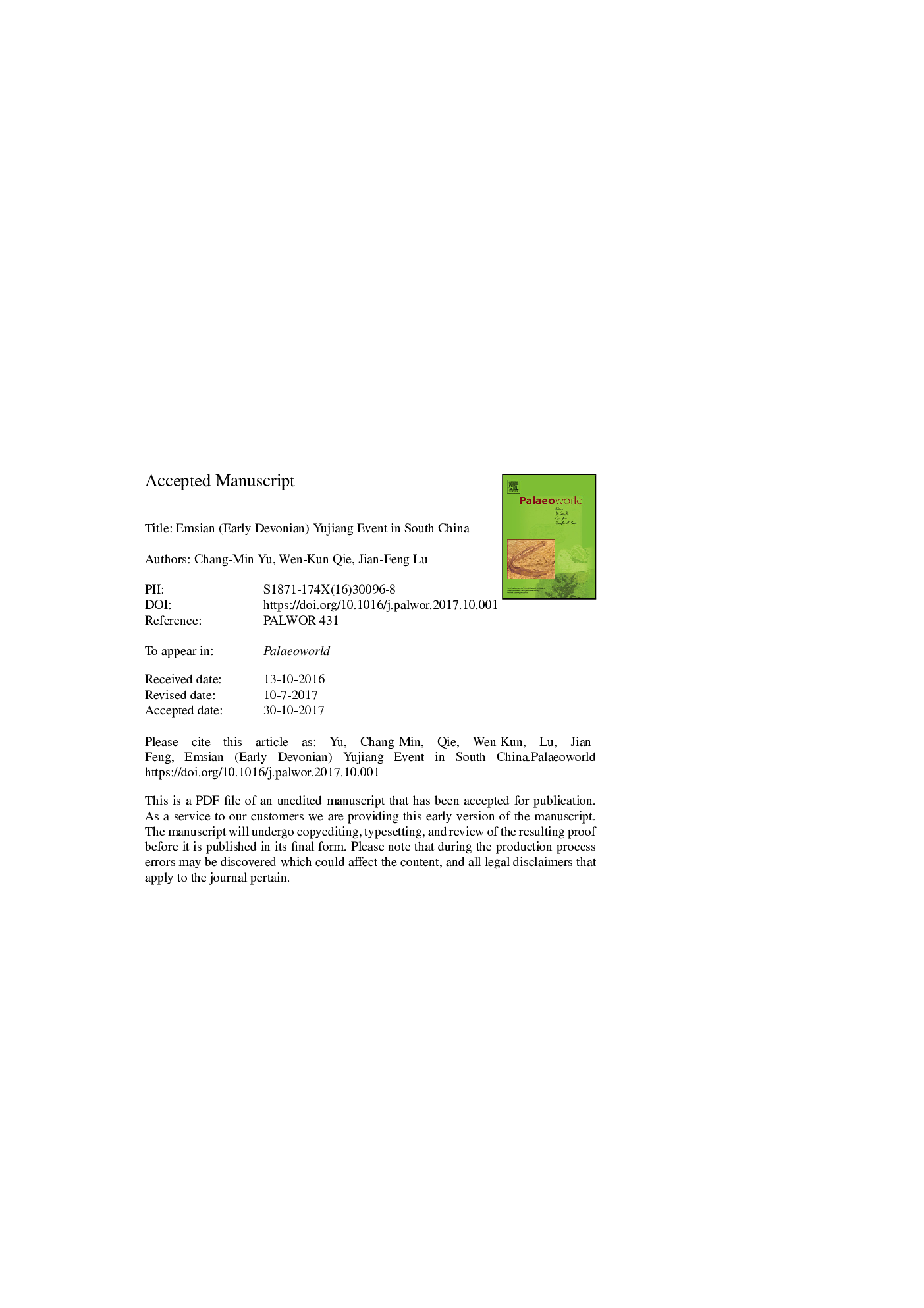| Article ID | Journal | Published Year | Pages | File Type |
|---|---|---|---|---|
| 8916556 | Palaeoworld | 2018 | 32 Pages |
Abstract
The Yujiang Event is reported here as a newly recognized event that occurred during the deposition of the Early Devonian Yukiang Formation in Liujing, Guangxi, and its equivalents in South China. The first episode of the Yujiang Event is characterized by the extinction of biostrome that is constructed mainly by colonies of rugose coral, tabulatimorph coral and bryozoan as well as the extinction of evolved biota including some brachiopods, bivalves, etc. The age of the first episode of the Yujiang Event dated by conodonts is at the beginning or the lower part of the Polygnathus nothoperbonus Zone. The main episode of Yujiang Event is evidenced by the extinction of the Rostrospirifer tonkinensis Fauna (sensu lato) at the top of Yukiang Formation and by the sudden occurrences of the dolostones and dolomitic limestone of the overlying Moding Formation. At the basal part of the Moding Formation, the new finding of conodont Polygnathus nothoperbonus and dacryconarids Nowakia (N.) barrandei indicates that this episode of Yujiang Event may occur in the upper part of the Polygnathus nothoperbonus Zone. Overlying the Yukiang Formation and its equivalent beds, various lithic deposits correspondingly yielding different biota can be seen widely in many localities and sections in South China and northern Vietnam. Therefore, the Yujiang Event can be recognized not only as a biotic extinction event, but also as a geological event.
Keywords
Related Topics
Physical Sciences and Engineering
Earth and Planetary Sciences
Palaeontology
Authors
Chang-Min Yu, Wen-Kun Qie, Jian-Feng Lu,
